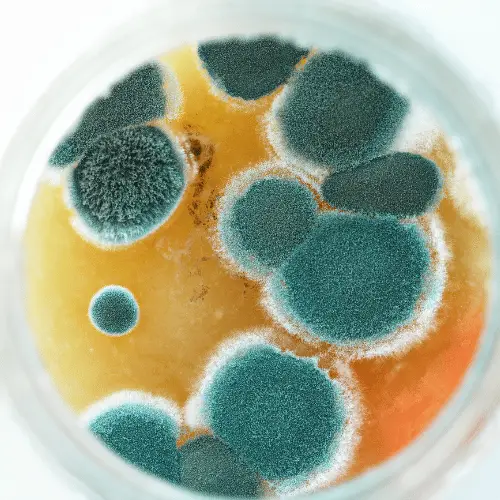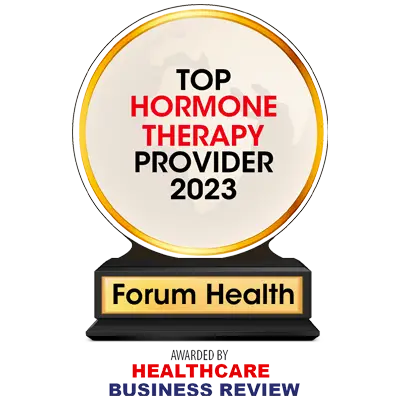Chronic Inflammatory Response Syndrome (CIRS) and Mold Treatment Program
Chronic Inflammatory Response Syndrome (CIRS) and Mold Treatment Program in Vienna, VA
Chronic Inflammatory Response Syndrome (CIRS) is an acute, chronic, multi-system and multi-symptom systemic inflammatory response from exposure to mold and other biotoxins. The toxins attach to the immune system to trigger an inflammatory response and induce hormonal changes. It is also known as biotoxin Illness, mold illness, and mold toxicity. The inability to process toxins, regardless of source, leads to a series of biochemical alterations called the Biotoxin Pathway. Based on genetics research, 24% of the population has the genetic profile that makes them susceptible to developing a biotoxin or mold-related illness whereas the other 76% of the population will generally be able to detoxify biotoxins.
What causes CIRS and Mold Illness?
CIRS and mold illness are growing at epidemic rates thanks in part to accurate diagnosis.80% of CIRS and mold cases are caused by:
- Indoor air contaminated with mold toxins such as water-damaged buildings
- Tick or spider bite
- Fish poisoning
- Contact with contaminated water
- Failed or leaking breast implants

The Challenge of Diagnosing CIRS and Mold Illness
CIRS and mold exposure symptoms overlap with many other chronic illnesses making diagnosis challenging and leading to missed diagnosis.
CIRS is frequently misdiagnosed as fibromyalgia, Lupus, Lyme disease, Multiple Sclerosis Parkinson’s disease, Menopause, Andropause, Chronic Fatigue Syndrome, Chronic Pain Syndrome, depression, Post Traumatic Stress Disorder, and even allergies.
CIRS-Mold Symptoms
- Aches
- Abdominal pain
- Appetite swings
- Blurred vision
- Confusion
- Cough
- Cramps
- Diarrhea
- Disorientation
- Difficulty concentrating
- Difficulty regulating body temperature
- Excessive thirst
- Fatigue
- Headaches
- Ice pick pain
- Joint pain
- Light sensitivity
- Memory impairment
- Metallic taste
- Mood swings
- Night sweats
- Numbness
- Red eyes
- Shortness of breath
- Sinus congestion
- Skin sensitivity
- Static shock
- Stiffness
- Teary eyes
- Tingling
- Tremors
- Unusual pain
- Urinary frequency
- Vertigo
- Weakness
CIRS and Mold Illness Diagnosis
Diagnosing CIRS and Mold Illness is a multi-phase process. We first confirm if you’ve being impacted by CIRS and then identity the source of the biotoxin(s) through CIRS testing. The core diagnostic tools used are:
Visual Contrast Sensitivity Screening Test
If positive, there’s a high probability of biotoxin illness.
MRI with NeuroQuant
Helpful to differentiate CIRS from Lyme disease. It measures the volumes of specific brain structures with research showing that CIRS patients have a particular signature that is very different from Lyme patients.
Genomics
Emerging research shows several identifiable genetic irregularities in CIRS patients.
Environment Relative Moldiness Index (ERMI)
Highly specific DNA-based method for quantifying mold species in an environment such as home or office. It is used to determine what environment is creating the biotoxins and which specific mold species are in the environment.

Why we don’t use urine mycotoxin testing
- The presence of mycotoxins doesn’t mean disease is present. It only proves that exposure to a mycotoxin production source has occurred.
- Urine mycotoxin test only looks for mycotoxins but there are several other problematic pathogens in mold illness. These include fungi, bacteria, actinomycetes as inflammagens such as endotoxins, beta glucans, hemolysins, proteinases, mannans and possibly spirocyclic drimanes; as well as volatile organic compounds.
- Pro-urine mycotoxin studies lacked proper controls. They only included unexposed controls, rather than controls with exposure but no symptoms. Proper design would reveal mycotoxin presence regardless of illness.
- Urine production and pathogen concentrations vary due to fluid intake and unrelated conditions, impacting toxin exposure assessment. Single-sample testing by labs introduces variability. A 24-hour sample would yield more predictable, reliable results.
Nonetheless, there are some limited situations and cases where urine mycotoxin testing may be useful with respect to ensuring the optimal binder is being used.
CIRS and Mold Sickness Treatment Program
Our CIRS treatment protocol uses a highly personalized, functional medicine approach with advanced diagnostics and treatments.
We work to stop the progression of the disease, remove the bio toxins from the body, reverse the damage done to the cellular structures and help you to make a full recovery. The steps we follow are below.
- Remove patient from exposure to bio toxins.To start the healing process, the impacted areas are remediated, where possible. If not, the patient will need to move out of the affected environment. Continued exposure will compromise the treatment program and make healing very difficult.
- Remove biotoxins from the patient’s body using “binder” agents. Welchol andCholestryamine are two of the binding agents typically used. Cholestryamine readily binds bioxoxins that are processed in the bile duct in the liver and helps to carry them out of the body and has been proven in placebo-controlled studies to reverse many aspects of the inflammatory process of CIRS.
- MARCoNS (Multiple Antibiotic Resistant Coagulase Negative Staphylococci Eradication is an antibiotic resistant staph infection that resides deep in the nose of 80% of people suffering from Biotoxin Illness and other chronic inflammatory illnesses. It must be removed for the patient to return to health.
- Clean up the “terrain”. These steps will vary for each patient depending on which areas have been impacted and the severity of the CIRS process. With each step, re-testing is needed to confirm that the imbalance has been corrected.
- Diet Modifications – To help stop the growth of the mold fungi, patients should avoid mycotoxin causing foods including corn, rye, peanuts, wheat, barley, cottonseed, some cheeses, rice, oil seeds, black pepper, dried fruits, figs coffee, beans, bread and alcoholic beverages including wine and beer.
We have successfully treated many patients with a history of severe, unexplained health issues. If you have been exposed to a water damaged building or have severe, unexplained health issues, CIRS could be the cause. The good news is that we can successfully diagnose and treat this disease, help you heal and regain your life!
Ready to get started?
Resources
Think mold isn’t harmful? Has your primary care or other physician advised that mold illness isn’t real? Just read this article and share this with those doubting the dangers of mold exposure.
- Medically sound investigation and remediation of water-damaged buildings in cases of chronic inflammatory response syndrome.
- https://www.msn.com/en-nz/news/world/seattle-childrens-hospital-closing-10-operating-rooms-after-mold-kills-six/ar-BBWXml7
- Breast implant illness resource page
- CIRS Resource Center — Surviving Mold by Dr. Shoemaker
- Mold exposure from front-loading washing machines


